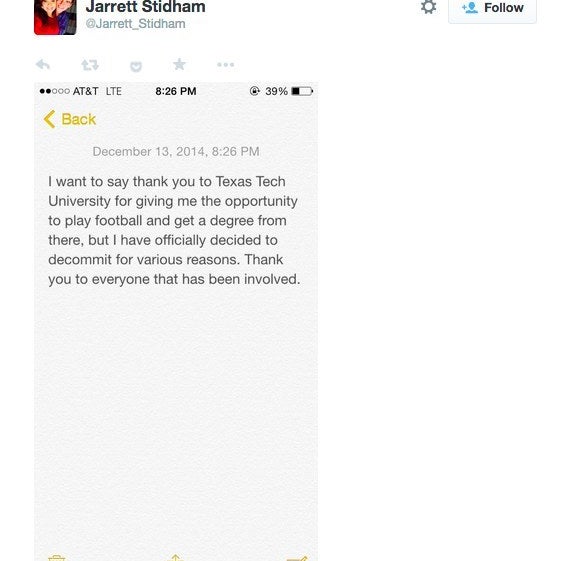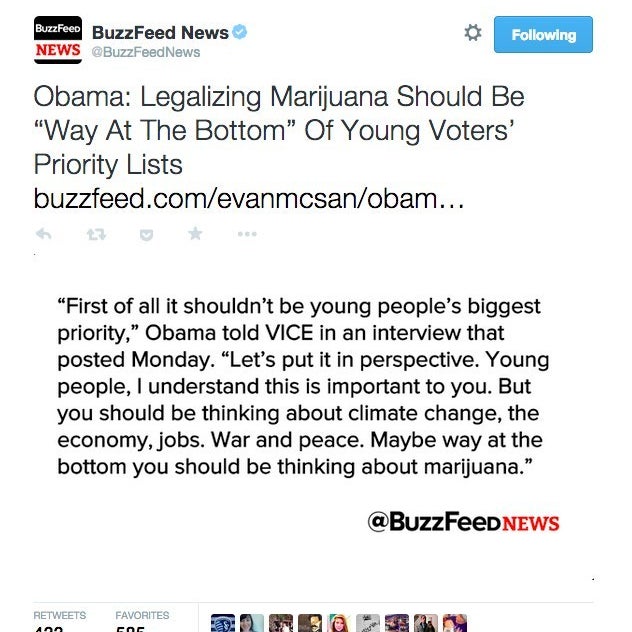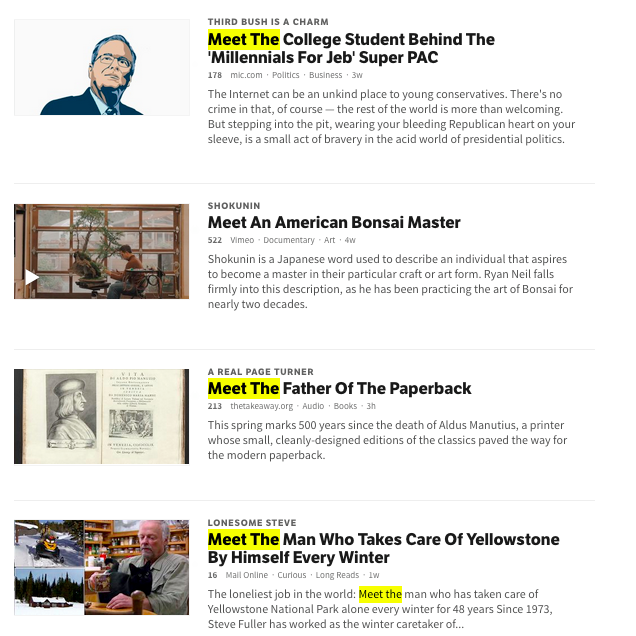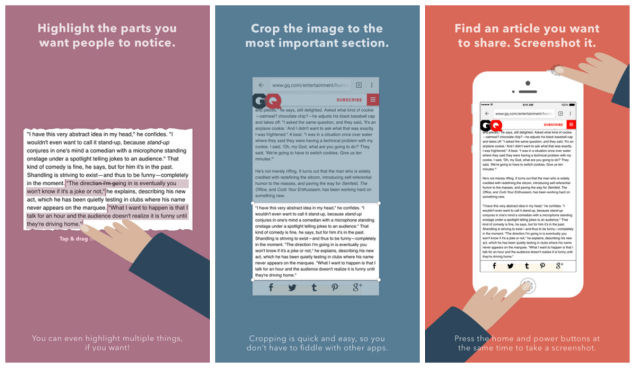


The evolution of the screenshort.
So far screenshorts — screenshots of text shared on social media — have had an excellent 2015. They’re bleeding from their origins on Twitter and Instagram out into Facebook and across the web as the most effective way to share blurbs of text. Media companies have noticed and have begun professionalizing the screenshort. The New York Times, Wall Street Journal, Medium, and BuzzFeed have all built formal internal screenshort tools. Twitter veterans Jason Goldman and Ian Ownbey rolled out OneShot, a stand-alone screenshort app that allows anyone to elegantly share passages of their liking. Instapaper built screenshorting in as a function of its newest app. They’re everywhere.
The screenshort has gone mainstream. https://t.co/TCIWrIH5L2 https://t.co/8F2CNPIEhg https://t.co/FzS6Rwlaz4 https://t.co/j6l0LVKf4Q
There are a few reasons for this: It’s an intimate, user-instigated behavior that still feels organic, and it’s an extremely efficient way to share digestible chunks of text that get around Twitter's character limits and Facebook’s truncation. But perhaps more important, taken together, these elements begin to provide an even greater service in the fractured and frenetic new-media ecosystem: Screenshorts could be a real solution to bizarre, nü-internet–style headlines. The Way We Write Headlines Now is terrible and the rise of the screenshort is largely due to the fact that screenshorts give us a better way to tease and share stories.
The social web has a strange relationship with headlines. The one-size-fits-all canonical newspaper-style headline rarely exists anymore as readers increasingly get their news from feeds and streams, rather than on homepages or in print. As John Herrman wrote for BuzzFeed News in 2013:
Online, headlines are not part of stories; they exist outside of stories. Their former three-pronged role, as place-marking buoys and summaries and introductions, has been largely mooted: The place-marking is done on a front page, on Twitter, on Facebook or elsewhere; the summarization can be taken care of with a dek or dedicated intro (which is written accurately and in grammatical English, not headlinese) or a first line; and the introduction, at this point, has already been made with the remote headline.
Headlines are rarely written for the pages they live on anymore. Instead, they live remotely on aggregation sites, and social media. Rather than informing the reader, the headline is often little more than an attempt to get someone’s attention — someone who is somewhere else, away from the publication itself — and draw them back to the site. This practice has resulted in an evolving series of internet-style headlines that range from intolerable robot-speak to peculiar and colloquial overly excited-best-friend pleas to read a story.
All are attempts to hook readers moving at a healthy clip through any number of link roundups, newsletters, social streams, and push notifications. Like any good lure, some are more successful than others, and every web editor worth a page view knows what they are. That, in turn, has led headlines to become incredibly formulaic. When something starts working, others copy it. Again, and again, and again. Which leads to ultimately, an endless series of the same. goddamn. headlines.
And yet, these clicky headlines are often useless. While they may serve the click, they often do not serve the reader. Things have gotten so bad that some aggregators — most notably Techmeme — rewrite headlines to make them more informative.
Want to see just how bad things are? As an experiment, BuzzFeed News asked Digg CTO Michael Young to scan the archive of stories selected by Digg editors (stories chosen because they're not only clickable, but also good!) over the last two years for overused headline conventions.
A few notable finds:
* 5,084 stories with some variation of "How The" in the headline or subheadline.
* 385 stories featuring a "Meet The" in the headline or subheadline.
* 481 stories with some version of "Inside The" in the headline or subhead.
* There were also a few surprises, including only 28 debunking headlines that started with a "No,".


Digg searches for popular internet headline conventions.
The good news is that screenshorts help to finally get us out of our headline rut.
Screenshorts are far more personal than headlines. Mobile screenshots of any kind are immediately engaging and provide a level of intimacy, offering a glimpse into someone’s most personal possession: their phone.
Seeing a snap of someone’s homescreen or a highlighted screenshort feels indescribably personal. That somebody took the time to highlight and screenshot a passage of text from their phone is a ringing endorsement of that passage; both because it a personal recommendation and because it's also a sort of cumbersome thing to do. It takes a little time to cobble together a screenshort, which implies that the passage in question is important and worth one's time.
Second, much like so many of Twitter's features (hashtags, @replies) the screenshort is an organic, user-created behavior. Jason Goldman, one of OneShot's creators and a former VP of product at Twitter and product manager at Blogger, who was recently tapped by President Obama to become the White House's first Chief Digital Officer, told BuzzFeed News that the decision to build out a screenshort product came when he and Ownbey realized that mobile screenshotting was not just a geek behavior, but something that kids and most savvy mobile humans were doing to share moments from their phones. Goldman began to see it as a way for readers to share a story while crafting their own headlines and retaining a little bit of autonomy.

"I think its a more user-centered user value way of creating content," he said. "It's saying, 'Look, I'm going give you the best part. It's not a clickbait headline; it's what I think is the most interesting part.' It's more humane, more user-respectful. You are saying, 'I want you to make an informed decision about what lies behind the click.'"
Above all though, the screenshort takes pressure off the actual headline by providing a longer preview that's not unlike the standard subheadline or dek. It's a work-around to Twitter's 140-character limit that doesn't abuse the constraint as much as enhance it. And it seems to work. First, there’s the engagement on the tweets and Facebook posts themselves, which many have noted is markedly better.
And, at least anecdotally, it seems that providing the option of saving a reader a click seems to be a good way to get them to, well, click.
“Talking to folks who’ve implemented their own screenshot tools, the fear was that you were going to cannibalize page views and give too much away for free,” Goldman told BuzzFeed News. “But those I’ve talked to are saying it seems to work as, like, a movie trailer for the content and gets people pulled in, and then they want to see the story. That's a bit unexpected.”
Take this tweet, which highlights a passage using OneShot. It is presented without any commentary or user-generated headline. Instead, the user has selected a relevant passage from a longer article that draws the reader in, letting the writer's work speak for the piece, rather than relying on user commentary, stock headlines, or a reimagined headline.
http://t.co/9K0Wo0AAcl
As Herrman noted, nü-internet–style headlines are just pitches and pleas and often times bastardizations of the actual article content. And they're why anyone who spends too much time online is tired of going Inside X To Meet The Man Behind X and finds that being asked to Take A Minute To Watch This Video to be reminded of Everything They Need To Know About X is growing stale.
But while the headlines we choose don't always do justice to the body of the articles, the best headlines are hidden in the story — they're just not headlines in the way we traditionally think of them.
Instead, they're miniature article teasers, personalized organic-feeling recommendations in the form of screenshot text. They say, 'Hey, we respect your time and intelligence and here's this thing we would love for you to read — totally your call but here's all the information.'
It’s early yet, but perhaps screenshorts will actually change headlines for the better. A good screenshort takes all the pressure off the headline to hook the reader, leaving the writer and editors to play with form and maybe even come up with interesting/funny/exciting/artistic headlines that people enjoy writing and reading. If nothing else, we can at least stop spending so much time agonizing over and writing them. They've been right in front of us all along.
